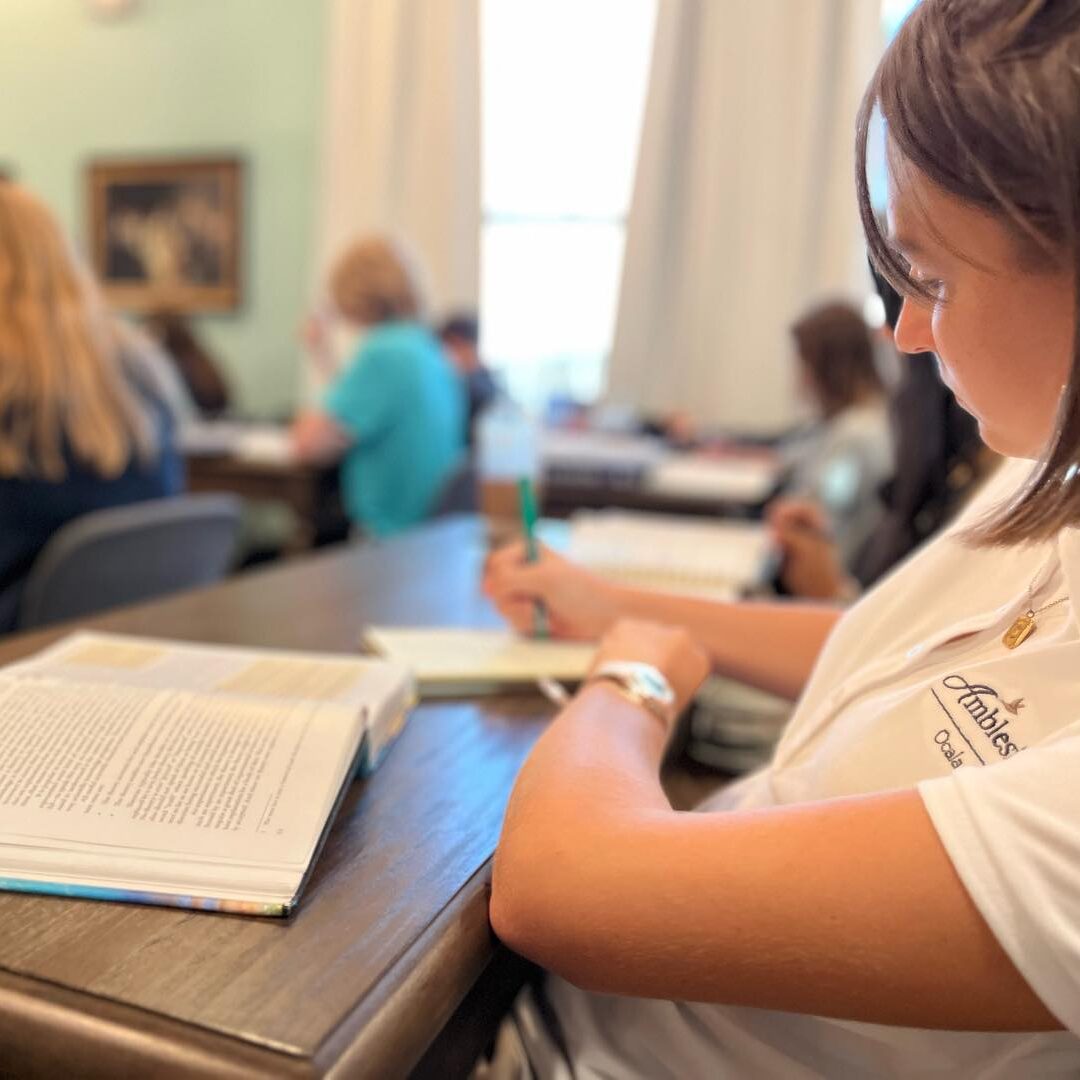Ambleside Schools International Articles

Photo courtesy of Ambleside School of Ocala.
Browse more Ambleside Schools International Resources.
Education as Gradgrind or Fulness of Living
Like so many of Charles Dickens’ wonderful characters, Thomas Gradgrind is a caricature but a caricature with a point.
‘Now, what I want is Facts. Teach these boys and girls nothing but Facts. Facts alone are wanted in life. Plant nothing else and root out everything else. You can only form the minds of reasoning animals upon Facts: nothing else will ever be of any service to them. This is the principle on which I bring up my own children, and this is the principle on which I bring up these children. Stick to Facts, sir!”
Thomas Gradgrind, sir. A man of realities. A man of facts and calculations. A man who proceeds upon the principle that two and two are four, and nothing over, and who is not to be talked into allowing for anything over. Thomas Gradgrind, sir—peremptorily Thomas—Thomas Gradgrind. With a rule and a pair of scales, and the multiplication table always in his pocket, sir, ready to weigh and measure any parcel of human nature and tell you exactly what it comes to. It is a mere question of figures, a case of simple arithmetic.1
A Gradgrind education takes it as a given that students are merely rational bipeds with an opposable thumb who possess all the potentialities, capacities and needs of highly complex, organic machines. It conceives of students as material girls and boys living in a material world, who are themselves matters of fact and who must learn their facts (with, time permitting, a periodic nod to the cultivation of cognitive faculties as suggested by Bloom’s taxonomy or the like). To be sure, such a view of education fails to reflect the heart of most educators, who care deeply for their students and long for them to flourish. Yet, it is generally reflective of the classroom experience of most students, who perceive school as an institution one attends for the purpose of mastering facts and algorithms, to get an acceptable grade and progress to the next set of facts and algorithms. Educators and students alike generally understand that the educator’s job is to facilitate this progression. Such educators function as an “instructor” and are not worthy of the title “teacher.”
How very different is the description Helen Keller provides of her teacher, Anne Sullivan.
The most important day I remember in all my life is the one on which my teacher, Anne Mansfield Sullivan, came to me. I am filled with wonder when I consider the immeasurable contrasts between the two lives which it connects. It was the third of March 1887, three months before I was seven years old.
On the afternoon of that eventful day, I stood on the porch, dumb, expectant. I guessed vaguely from my mother’s signs and from the hurrying to and fro in the house that something unusual was about to happen, so I went to the door and waited on the steps. The afternoon sun penetrated the mass of honeysuckle that covered the porch and fell on my upturned face. My fingers lingered almost unconsciously on the familiar leaves and blossoms which had just come forth to greet the sweet southern spring. I did not know what the future held of marvel or surprise for me. Anger and bitterness had preyed upon me continually for weeks and a deep languor had succeeded this passionate struggle.
Have you ever been at sea in a dense fog, when it seemed as if a tangible white darkness shut you in, and the great ship, tense and anxious, groped her way toward the shore with plummet and sounding line, and you waited with beating heart for something to happen? I was like that ship before my education began, only I was without compass or sounding line, and had no way of knowing how near the harbor was. “Light! give me light!” was the wordless cry of my soul, and the light of love shone on me in that very hour.
I felt approaching footsteps, I stretched out my hand as I supposed to my mother. Someone took it, and I was caught up and held close in the arms of her who had come to reveal all things to me, and, more than all things else, to love me.2
As Anne brought life to Helen, so teachers at Ambleside bring life to their students. Contrary to Thomas Gradgrind and most of contemporary pedagogical practices, we join Charlotte Mason in the conviction that the right kind of education leads to “fulness of joy in living.”
Later, we step in to educate him. In proportion to the range of living relationships we put in his way, will he have wide and vital interests, fulness of joy in living. In proportion as he is made aware of the laws which rule every relationship, will his life be dutiful and serviceable: as he learns that no relation with persons or with things, animate or inanimate, can be maintained without strenuous effort, will he learn the laws of work and the joys of work. Our part is to remove obstructions and to give stimulus and guidance to the child who is trying to get into touch with the universe of things and thoughts which belongs to him.3
To be clear, at Ambleside, we believe that instruction in the facts and algorithms of history, literature, math, science, and the remainder of the curriculum are secondary to the cultivation of “fulness of living.” We further believe that the fulness of living includes delightful learning of history, literature, math, science, and the remainder of the curriculum; that without these there is no fulness of living.
1 Charles Dickens, Hard Times, (New York, NY: Penguin Classics, 1995) 10-12.
2 Helen Keller, The Story of My Life, (Mineola, NY: Dover Publications, 1996) 13-14.
3 Charlotte Mason, School Education, (Wheaton, IL: Tyndale House Publishers, Inc., 1989) 187-188.



